The Evil Within – Preview
by Mark R
|
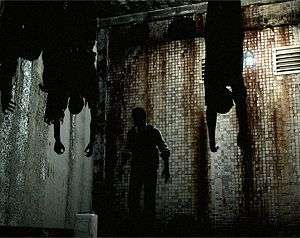 I’m not the best person to comment on whether a game is ‘scary’ or not; I was never a timid child, and watching movies such as Driller Killer, The Burning, and Last House On The Left (among countless others) before I had even reached ten years old did more than desensitize me to what many would consider to be frightening. Similarly, jumping out on me from a dark corner with the obligatory yell of “mwoooooaaaaah” will undoubtedly not result in any sort of terrified jump but will invariably land you several fists to the face or, at the very least, a quizzical raised eyebrow, depending on my mood at the time. Yet while I may not necessarily scare, I do still understand what’s required for other people to be pulled in: tension, atmosphere, psychology, immersion, and imagination.
I’m not the best person to comment on whether a game is ‘scary’ or not; I was never a timid child, and watching movies such as Driller Killer, The Burning, and Last House On The Left (among countless others) before I had even reached ten years old did more than desensitize me to what many would consider to be frightening. Similarly, jumping out on me from a dark corner with the obligatory yell of “mwoooooaaaaah” will undoubtedly not result in any sort of terrified jump but will invariably land you several fists to the face or, at the very least, a quizzical raised eyebrow, depending on my mood at the time. Yet while I may not necessarily scare, I do still understand what’s required for other people to be pulled in: tension, atmosphere, psychology, immersion, and imagination.
When I heard that Shinji Mikami, creator of the pivotal Resident Evil series, was embarking on a new venture in horror alongside Bethesda, my interest was immediately piqued as it would almost certainly contain all five of the aforementioned requirements. With Resident Evil already having a very specific genetic makeup, it’s practically inconceivable that the revered creator would simply take the same elements and merely change the storyline, setting, and branding. To do so would not only devalue his original creation, but would undoubtedly risk the failure of what could very well be the new generation’s seminal horror franchise. Thankfully, there’s more to it than rebranding an existing formula.
While Resident Evil featured what could only be described as tangible enemies, regardless of how other-worldly they could be, The Evil Within uses this as its foundation and builds upon it by using a blend of extreme violence, psychological torment, gore, and fear-driven hallucinations. As well as the spine-chilling encounters with hordes of enemies, our hero – detective Sebastian Castellanos, will have to find solutions to puzzles which may involve physically probing the brains of resident mental patients who, despite having no body, remain very much alive and conscious. It’s pretty safe to assume that, regardless of the scare tactics employed, The Evil Within is not for the faint of heart.
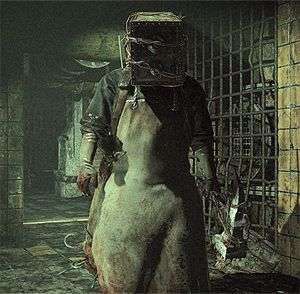 The plot itself could quite easily have been ripped from any of the charming Hammer movies of the 1970s – a young detective is tasked with investigating the scene of a brutal mass murder but, upon arriving, discovers that there’s more to the deaths than meets the eye. As the sole survivor, having witnessed the rest of his investigative team torn to shreds, Castellanos falls prey to the attackers and is knocked unconscious before eventually waking up in a world infested by mutilated beings and gnarled psychotics. Naturally, rather than making a swift exit to call upon the National Guard, he instead opts to investigate further. On his own. It’s flimsy at best, and devoid of any practical sense, but if Frodo had simply stuck the ‘One Ring To Rule Them All’ in a Jiffy bag and addressed it ‘The Big Volcano’ before passing it off to UPS, it would have made for a pretty poor experience and, similarly, suspension of disbelief is perhaps the driving force for The Evil Within.
The plot itself could quite easily have been ripped from any of the charming Hammer movies of the 1970s – a young detective is tasked with investigating the scene of a brutal mass murder but, upon arriving, discovers that there’s more to the deaths than meets the eye. As the sole survivor, having witnessed the rest of his investigative team torn to shreds, Castellanos falls prey to the attackers and is knocked unconscious before eventually waking up in a world infested by mutilated beings and gnarled psychotics. Naturally, rather than making a swift exit to call upon the National Guard, he instead opts to investigate further. On his own. It’s flimsy at best, and devoid of any practical sense, but if Frodo had simply stuck the ‘One Ring To Rule Them All’ in a Jiffy bag and addressed it ‘The Big Volcano’ before passing it off to UPS, it would have made for a pretty poor experience and, similarly, suspension of disbelief is perhaps the driving force for The Evil Within.
In true horror style, those hot on your heels may be human in appearance, but are clearly beyond mere mortals. While they bear more than a passing resemblance to zombies, there’s nothing to suggest that they are undead and are more likely to be the survivors of whatever macabre experiments they’d been subjected to over a long period of time. With clear signs of abuse, such as missing limbs, jaws torn off, railway spikes through their faces, and even some who have been wrapped and bound in razor wire, these tormented souls are understandably pretty damned pissed off and will stop at nothing to make sure Castellanos feels the same pain that they’ve had to endure.
At your disposal are your police-issue revolver, a knife, a shotgun, and other limited-use weapons that you’ll find peppered around each area. Quite why ammunition and the odd grenade are left lying around unnoticed is yet another of those ‘suspension of disbelief’ scenarios and is perhaps best left unquestioned, especially as they are your only salvation. More difficult to dismiss, however, are the various bombs and booby traps that you’ll encounter as you make your way around this twisted world, as it really does beg the question of how these staggering, clumsy, near-dead lumps of flesh somehow manage to get around without setting them off themselves, as none of them give the impression that they’re very smart.
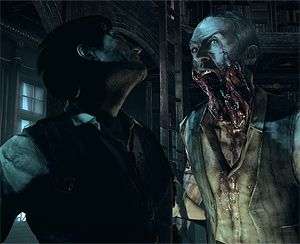 Another questionable facet of the game, although one which remains more of a mystery at the moment, is that Castellanos’ abilities can be upgraded as you progress. While neither Bethesda nor Tango would explicitly comment on how this was achieved, the phials of green liquid found scattered around the world can be consumed, so it’s possible that the upgrades are linked to this mysterious concoction. Why anyone attempting to survive a creature-infested world after already being brutally attacked at the start would think it safe to drink an unknown substance is beyond me, especially as it’s within a chemical phial. And it’s green. It’s hardly likely to be test tubes filled with a delicious blend of kale and watercress, yet still he drinks it. Hopefully, once more light is shed on this particular subject, it’ll make more sense than it does at the moment.
Another questionable facet of the game, although one which remains more of a mystery at the moment, is that Castellanos’ abilities can be upgraded as you progress. While neither Bethesda nor Tango would explicitly comment on how this was achieved, the phials of green liquid found scattered around the world can be consumed, so it’s possible that the upgrades are linked to this mysterious concoction. Why anyone attempting to survive a creature-infested world after already being brutally attacked at the start would think it safe to drink an unknown substance is beyond me, especially as it’s within a chemical phial. And it’s green. It’s hardly likely to be test tubes filled with a delicious blend of kale and watercress, yet still he drinks it. Hopefully, once more light is shed on this particular subject, it’ll make more sense than it does at the moment.
It is perhaps my nagging internal monologue of ‘suspension of disbelief… just ignore the feasibility of it‘ that ruined the immersion for me and, as a result, any chance of real fear. The more you come across something which screams ‘implausible’, the more you’re reminded that you’re not actually there and are only experiencing a form of entertainment which isn’t to be taken seriously. As bizarre and twisted as it was, Amnesia: The Dark Descent, somehow managed to retain that immersive quality and keep the player on tenterhooks as they struggled to remain sane throughout their journey. The fear in Amnesia was reinforced by some very realistic elements, such as the oil in the lamp burning down and you having to find more in order to combat the darkness, but fear is being shoe-horned into The Evil Within with restrictions such as only being able to carry eight matches at a time. It’s a ridiculous mechanic which has been introduced to impose limitations, and it makes no sense.
Ultimately, The Evil Within doesn’t yet live up to my expectations. It wasn’t that I expected to be scared and wasn’t, as I genuinely didn’t foresee any fear, but I did at the very least hope for something which served the psychological aspect well by making sense. If the world around you is questionable and has a myriad of features which appear to exist only as plot devices to drive the horror aspect, but which have no discernible reason to be there (ammunition and grenades within an asylum, the ability to only carry eight matches at once despite having room for a shotgun, along with bombs and booby traps which aren’t triggered by lumbering creatures) then the fear is surely lost if there is no sense of reality to evoke an immersive state.
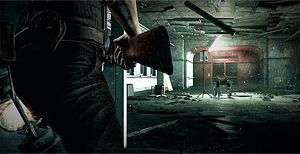 What I will say, however, is that my time with The Evil Within was within a purpose-built room which was shrouded in darkness… and everyone around me was repeatedly jumping, yelping, or shrieking. As cynical as I am about it from a personal standpoint, Tango Gameworks are clearly doing something right if the reactions of my comrades are anything to go by, and I’ll be giving it another shot when it’s released in October but it needs to change or it won’t work as well as it could.
What I will say, however, is that my time with The Evil Within was within a purpose-built room which was shrouded in darkness… and everyone around me was repeatedly jumping, yelping, or shrieking. As cynical as I am about it from a personal standpoint, Tango Gameworks are clearly doing something right if the reactions of my comrades are anything to go by, and I’ll be giving it another shot when it’s released in October but it needs to change or it won’t work as well as it could.
Last five articles by Mark R
- From Acorns to Fish
- Alone In The Dark
- Why Borderlands is Better Than Borderlands 2
- Falling Short
- The Division: A Guide to Surviving the Dark Zone Solo

















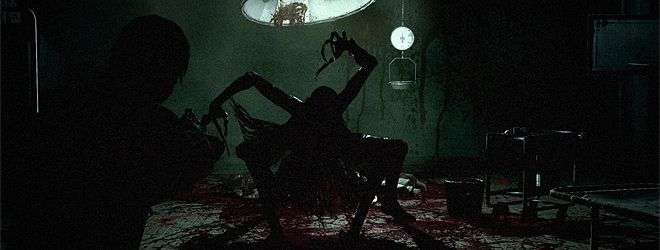
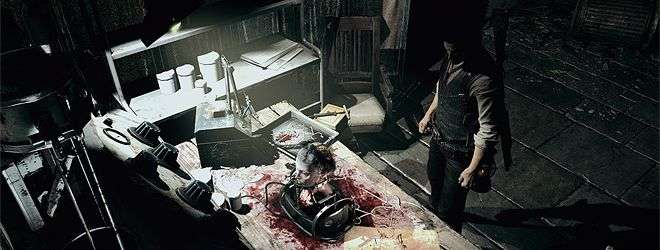
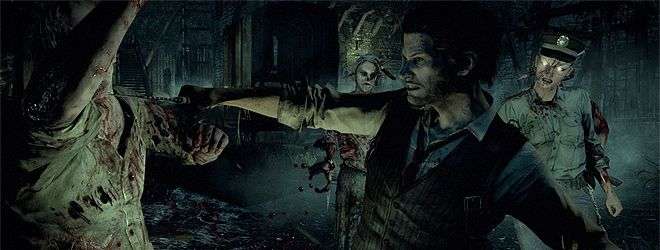





There are no comments, yet.
Why don’t you be the first? Come on, you know you want to!